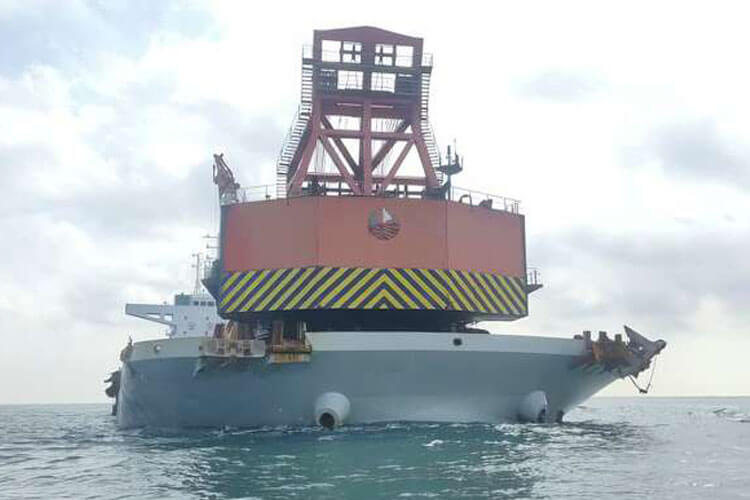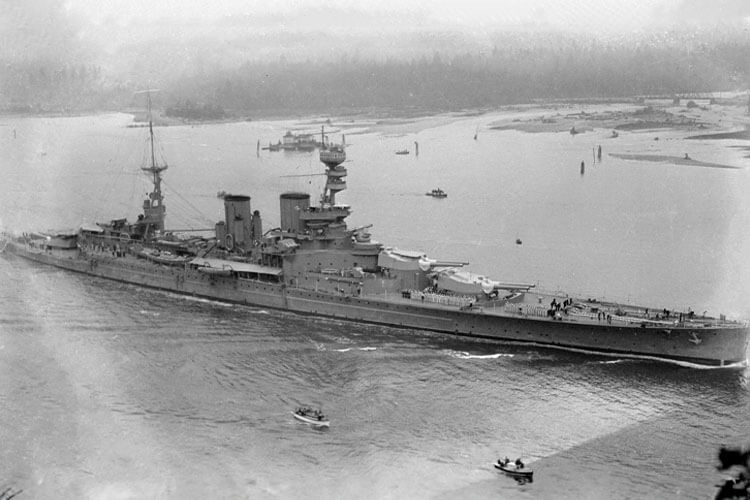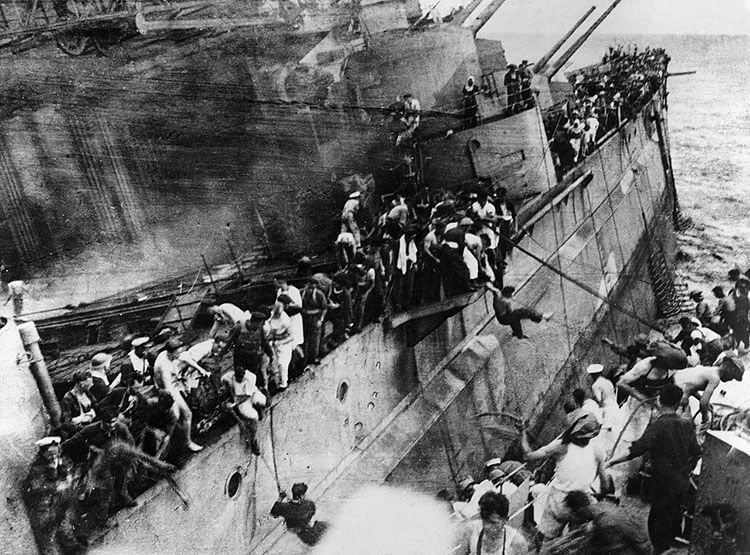
Malaysian authorities have detained a Chinese salvage vessel suspected of looting and desecrating the wrecks of HMS Prince of Wales and HMS Repulse, sunk in the South China Sea during the Second World War.
Both ships suffered heavy casualties and are recognised and protected as war graves under the Protection of Military Remains Act, 1986.
The Malaysian Maritime Enforcement Agency (MMEA) said that it seized the 32-crewmember, Fuzhou-registered bulk carrier Chuan Hong 68 on Sunday, 25 May, as it was anchored illegally over the wrecks.
Ammunition believed to be from the Second World War wrecks was subsequently found on board after the authorities were tipped to its presence by commercial divers.
The seizure follows the discovery on Friday, 23 May, of live ammunition, two British 5.25-inch anti-aircraft cannon, a ship’s anchor and sections of a ship’s hull – also believed to be from the British warships – by Malaysian Police in a scrapyard located at a private jetty in Kota Tinggi, Johor.
The discovery was reportedly made after the scrapyard operator uploaded a TikTok video of the Chuan Hong 68 offloading a cannon at the jetty.
Related historical military shipwreck articles

A spokesperson for the UK Ministry of Defence in London said: ‘We strongly condemn any desecration of any maritime military grave. Where we have evidence of desecration of the wrecks of Royal Navy vessels, we will take appropriate action, including working with regional governments and partners to prevent inappropriate activity at such sites.’
HMS Prince of Wales, a King George V-class battleship, and HMS Repulse, a Renown-class battlecruiser that had previously seen action during the First World War, were dispatched to Singapore to prevent Japanese incursion into Malaysia and Singapore.
The two ships were part of a British Royal Navy squadron designated ‘Force Z’, dispatched on 8 December 1941 – the day after the Japanese attack on Pearl Harbour – to intercept Japanese troop carriers thought to be en route to Kota Bharu in the north of Malaysia.
Reports of the landings were, however, a diversion, and on 10 December, Force Z was subjected to a ferocious attack by the Japanese Air Force. With no allied air support to counter the Japanese attack, Prince of Wales and Repulse were struck by bombs before being sunk by air-dropped torpedoes – the first capital ships to be sunk at sea solely by enemy aircraft.

The sinking is considered to be one of the worst disasters in British Naval history, with a total of 840 crew killed during the attack – 327 men from the HMS Prince of Wales‘ complement of 1612, and 513 of the HMS Repulse ‘s 1309.
The wrecks lie on the sea floor at a depth of around 70m, approximately 100km (60 miles) offshore, making them easy targets for criminal salvage operations; both wrecks were reportedly seriously damaged by explosives used by scavengers in 2014.
Old shipwrecks are targeted for their historical artefacts but also as a valuable source of ‘pre-war steel’, a name given to steel that was smelted before the atomic bomb testing of the 1940s and which therefore contains very little background radiation, making it particularly sought-after for medical and advanced scientific measuring equipment.
The Malaysian journal New Straits Times reports that Chuan Hong 68 is ‘known among the shipping community for its looting activities’, and is ‘notorious for illegally salvaging World War II shipwrecks in Singaporean, Cambodian and Vietnamese waters; responsible for looting 90 per cent of other World War II shipwrecks in the region.’

Chuan Hong 68 and its crew were previously detained in 2017 on suspicion of looting three Japanese World War II wrecks near Usukan, Malaysia, and is reportedly wanted by Indonesian authorities for looting the wrecks of the sunken Dutch warships HNLMS De Ruyter, HNLMS Java and HNLMS Kortenaer in the Java Sea.
‘We are distressed and concerned at the apparent vandalism for personal profit of HMS Prince of Wales and HMS Repulse,’ said Professor Dominic Tweddle, director general of the National Museum of the Royal Navy. ‘They are designated war graves. We are upset at the loss of naval heritage and the impact this has on the understanding of our Royal Navy history.’
‘What we need is a management strategy for the underwater naval heritage so that we can better protect or commemorate these ships. That may include targeted retrieval of objects.
‘Above all, we must remember the crews who served on these lost ships and all too often gave their lives in the service of their country.’
- Insta360 X5 action camera dive bundle review - 19 December 2025
- Order now! DIVE Winter 2026 print issue preview - 18 December 2025
- AIMS trials large-scale coral restoration during Great Barrier Reef spawning - 18 December 2025


